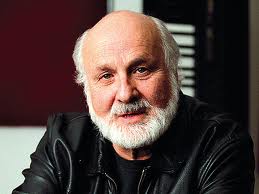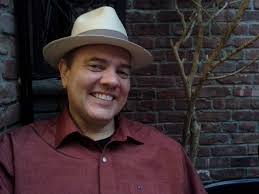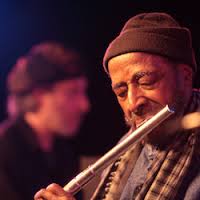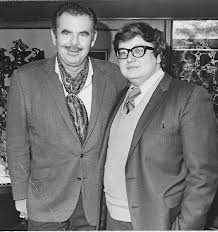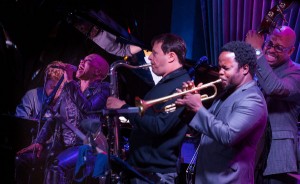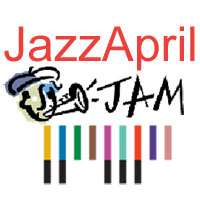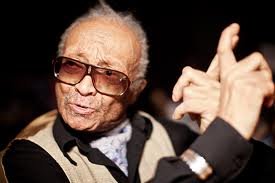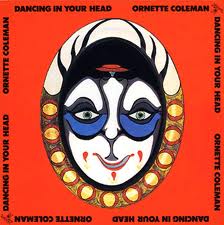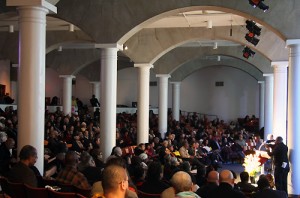Howard Mandel c 1998/published by DownBeat, July 1998, under headline Beneath the Underdog (the editor’s reference to Charles Mingus’s autobiography): There’s an anchor for New York’s downtown free jazz and improv “wild bunch”: his name is William Parker. The steadfast bassist has a huge, deep-rooted sound and concept, tied to more than 25 years of hard-won […]
Matthew Shipp, my feature for The Wire, 1998
[contextly_auto_sidebar id=”IFeXJPobvykRyuU4dU68FilRPv0EE8oC”] This is a complete version of the feature on pianist Matthew Shipp I wrote for The Wire, published in February, 1998 Is this the face of New York’s jazz avant now? Pianist Matt Shipp’s mug can be wide open, inquisitive, or guardedly blank, his expressions range from the distracted to the transcendent. On […]
Happy 80, Morton Subotnick!
Today — April 14 —  is the 80th birthday of one of America’s greatest musical game-changers, Morton Subotnick, the man who: co-founded the San Francisco Tape Music Center; envisioned and developed the electronic synthesizer as a tabletop orchestral palette; created Silver Apples of the Moon, the first  composition intended specifically for the long-playing vinyl record […]
JAM week 2: Edsel in Mali, Charnett solo, Gamak, Bria Skonberg
Second week of Jazz Appreciation Month: pianist Edsel Gomez talked  in my NYU “World Music” class of working with Malian musicians on Dee Dee Bridgewater’s extrafine Red Earth project; Ralph Simon, producer of late lamented Postcard Records and soprano saxist, had a private with me consultation on resuming jazz activities; Bassist Charnett Moffett at Birdland, midtown, for […]
Yusef Lateef, the Autophysiopsychic’s valedictory
An elder of African-American culture, a master improviser, a heroic performer, recording artist and educator, a genius who denounces the term “jazz” (but is an NEA Jazz Master) and reviles all the “vulgarity” which has traditionally been associated with the music but has never abjured blues, grit and funk — multi-reeds specialist Yusef Lateef at […]
Before Tarantino, there was Ebert (and Muddy Waters)
I’m as sad as any Chicago-born & raised movie fan about the death of Roger Ebert, who I saw regularly in the Chicago Sun Times/Chicago Daily News offices when I was a copyboy there in the ’70s, but to whom I never spoke. And I take umbrage at the characterization of him as a “middle-brow” […]
Early days of JazzApril
Jazz in NYC and vicinity early in Jazz Appreciation Month: Since Monday, April 1 I’ve — heard the all-star Monterey Jazz Fest on Tour band at the Blue Note Jazz Club, and singer Imani Uzuri w/band there, too; learned about the James Moody Democracy in Jazz Festival (sponsored by TD Bank) at the New Jersey […]
JazzApril begins (no joke!)
April is Jazz Appreciation Month (so named by the Smithsonian Institution), culminating on the 30th with International Jazz Day (a project of UNESCO, organized by the Thelonious Monk Institute of Jazz) — and both those initiatives are endorsed by the U.S. Conference of Mayors. So the Jazz Journalists Association has launched a major media campaign called […]
Marsalis in Stockton, the Dave Brubeck Institute and Take Five
It was a big deal in Stockton, CA last Friday, when Wynton Marsalis led his Jazz at Lincoln Center Orchestra at the 12th annual jazz festival produced by the Brubeck Institute at University of the Pacific.  The ticket holders’ line to enter the nicely restored Fox movie palace — now the Bob Hope Theatre, in the center […]
Celebrate Cecil Taylor, birthday 84
One-of-a-kind American master musical artist Cecil Taylor turns 84 today, March 25, and deserves our culture’s gratitude. His life has been one of relentless, intense, sweeping creativity, which has driven global developments in composition, improvisation, performance, attire and contemporary lifestyle to a much greater degree than has been much acknowledged — Â although Taylor does have […]
Happy birthday 83 — and 82 — Ornette Coleman
Ornette Coleman turns 83 today — and is celebrating it privately. That’s unusual, as he has thrown great parties, often full of live music (at his former Harlem Studio and one year at Joe’s Pub), always attended by fabulously interesting people — like the one last year for his 82nd birthday, Friday, March 9, 2012 […]
Dr. Donald Byrd, RIP; Jayne Cortez memorial photos
Dr. Donald Byrd was a trumpeter with an ear for the vernacular and fresh talent. Jayne Cortez was a radical poet — both esthetically and personally. Butch Morris was a jazz cornetist, composer, conductor and conductioner. Let’s celebrate the lives and creativity of all three. Strangely, reports by a nephew of Byrd’s death at age 80 on February 4 […]
Words and images for Butch Morris
Photos of celebrants of composer-conductor Lawrence Douglas “Butch” Morris at a memorial held in Angel Orensanz, a renovated former-synogag in the East Village, by Sánta István Csaba. Writings for and about Butch by Steve Dalachinsky. [slideshow_deploy id=’1263′] Conduction # Infinity (Out of Reach but Never Out of Touch) 1. Butch: his mischievous smile > stern […]

